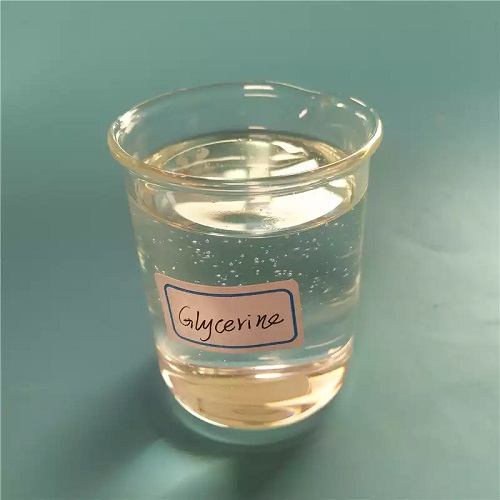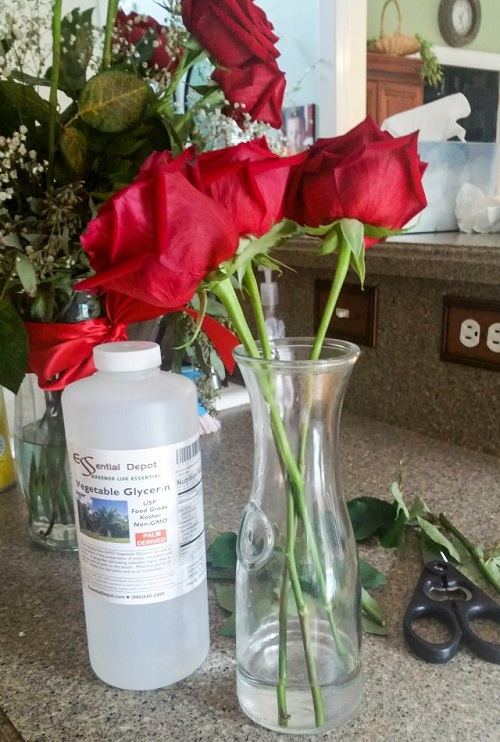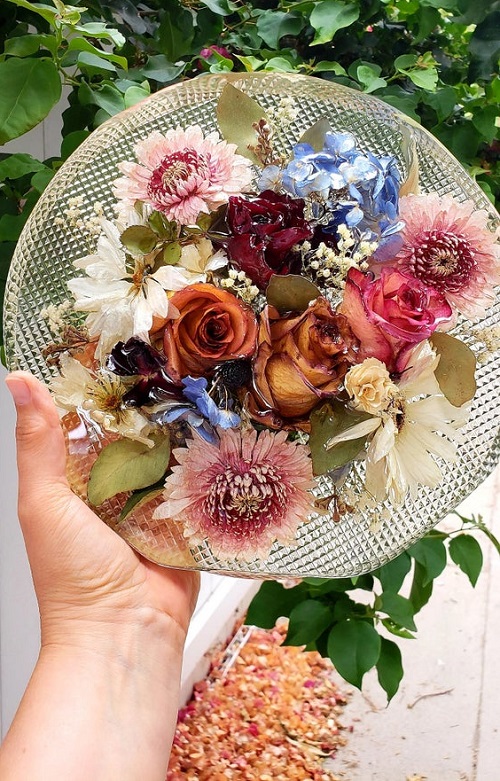Preserving Flowers with Glycerin will allow you to cherish life’s special moments and use them to make wreaths, garlands, ornaments, and other crafts all year round!
Preserved flowers are the cheapest and easiest way to amp up the look of your home. If you want to keep the beauty of your favorite flowers forever, read this article about Preserving Flowers With Glycerin.
Learn how to preserve flowers in resin here
What Is Glycerin?
Glycerin, also popular as glycerol, is a transparent and odor-free liquid with a thick viscosity. It’s collected from vegetable oils and animal fats. Glycerin is the 3rd most added ingredient in personal and skincare products. Besides being an integral part of a beauty repertoire, glycerol is also used to preserve flowers for a longer period of time.
Best Flowers to Preserve with Glycerin
To retain the shape, feel, and beauty of your favorite blossoms indefinitely, glycerin is one of the easiest and quickest ways. Always choose fresh flowers without any blemishes or deterioration for the preservation process. To cut your hassle, we have created a list of flowers that can be preserved well with glycerin.
- Bells of Ireland
- Forsythia
- Rosemary
- Magnolia
- Aspidistra
- Rose
- Jasmine
- Marigold
- Tulip
- Ranunculus
- Gerberas
- Peony
- Lavender
- Hydrangea
Preserving Flowers With Glycerin

Whether the flowers are from any special occasion or you only want to preserve seasonal ones all year round, glycerin is the savior. With glycerin, you don’t have to watch your lovely blossoms wilt anymore. Glycerin works by replacing the flowers’ water content with itself, thereby keeping their texture and appearance appealing. Learn how to preserve flowers with glycerin below.
Supplies
- One Part Glycerin
- Two Parts of Lukewarm Water
- An Empty Pitcher
- Scissor
- Knife
Directions
- Grab your favorite flowers and cut their stem to 6 inches, and remove leaves from the lower part of the stem.
- Next, cut the flower stems diagonally across their bottoms and peel off around 6 cm of skin from the stem’s base.
- Combine one part of glycerin and two parts of lukewarm water in an empty pitcher.
- Now, put the stems in the glycerin solution.
- Leave the flowers for 2-3 weeks to allow the solution to work.
- Make sure to check the blossoms after two weeks. If they have a rubbery feel and are completely pliable, it means that they are preserved well.
- Take blooms out from the pitcher, air dry them for a couple of hours to evaporate their remaining water content, and you are done.
Notes
- Preservation time differs from flower to flower. Thin petalled blooms will be ready in a week or two, and thick ones would take almost three weeks.
- During the preservation process, don’t overcrowd the container with flowers.
- If the flowers become limp after the treatment, suspend them in an inverted position for a week until the petals stand up the way desired.
- Keep the glycerin and treated flowers far away from the pets and children, as they must not ingest glycerine or even lick it.
- You can also add food coloring to the glycerin solution to alter the discoloration that happens during the preservation.
How Long Glycerin Preserved Flowers Last?
Fresh flowers generally last up to a week or so. Whereas blooms preserved in glycerin will survive for 6 to 12 months, sometimes even longer. If you don’t have glycerin handy, you can also try borax, wax, or resin methods to keep your favorite flowers fresh and alive for several years.
Benefits of Preserving Flowers with Glycerin
Below are some of the notable benefits of preserving flowers with glycerin.
- Maintains Look and Feel – Petals and leaves preserved with glycerin remain supple and soft indefinitely.
- Easy Maintenance – Preserved blooms can be cleaned and maintained easily without the fear of damage.
- Cost-Effective – As they last long, you don’t have to replace flowers regularly. This saves you money in the long run.
- Flowers Never Wilts – One of the vital benefits of preserving flowers with glycerin is that they never wilt.



I’ve seen some people preserve flowers in what I think is glycerin. It’s like a single flower suspended in the clear liquid. Do you know anything about doing this? Thanks!
It’s epoxy resin.
How do flower colors hold up with this glycerin process? Are certain colors better at being preserved this way? Thanks!
I tried doing this but the flower get limp where the head meets the stem. One rose fell off when I touched it. How do I prevent this ?
I always preserve eucalyptus from my backyard tree. Although it isn’t as pretty in color as the store bought kind, it does last forever. I am going to try some food color and fragrance in my next batch to see what it does. Fresh eucalyptus usually takes 5 to 6 weeks to preserve.
Thank you I will try and give my result